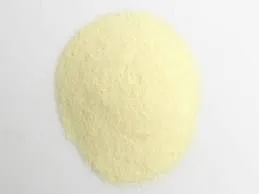Phosphatidyl serine is available worldwide
Time:2023-09-07Achieving a global supply of phosphatidyl serine involves several steps and considerations, as phosphatidyl serine is a specialized lipid compound primarily sourced from natural ingredients.Phosphatidyl serine is known for its potential cognitive and health benefits and is commonly used in dietary supplements and functional foods.Here's how global supply can be achieved:
1.Source of Phosphatidyl serine:
Natural Sources: Phosphatidyl serine is typically derived from natural sources such as soybeans and sunflower lecithin.The first step is to identify reliable suppliers of these raw materials.This may involve working with agricultural producers, processors, or distributors in different parts of the world.
2.Extraction and Production:
Extraction: The phosphatidyl serine content is extracted from the natural sources.This process may involve chemical extraction or more natural methods like cold-pressing, depending on the source.
Purification: After extraction, the phosphatidyl serine must be purified to meet quality standards.This step is crucial to ensure the final product is safe for consumption.
3.Manufacturing Facilities:
Establishing or sourcing manufacturing facilities capable of producing phosphatidyl serine supplements or ingredients to meet global demand is essential.These facilities should comply with relevant quality standards, Good Manufacturing Practices (GMP), and regulatory requirements.
4.Quality Control:
Implementing rigorous quality control measures throughout the production process is crucial to ensure the consistency and safety of phosphatidyl serine products.
5.Regulatory Compliance:
Compliance with regulations and quality standards specific to each region is essential.This includes complying with dietary supplement regulations, labeling requirements, and any other relevant regulations.
6.Distribution and Supply Chain:
Develop an efficient supply chain network that allows for the distribution of phosphatidyl serine products globally.This includes partnerships with distributors, wholesalers, and retailers in different markets.
7.Market Research:
Understand the demand for phosphatidyl serine in different regions and market segments.Conduct market research to identify potential customers and target markets.
8.Customization and Product Varieties:
Offer customized phosphatidyl serine products to cater to various consumer preferences.This might include different dosage forms (capsules, softgels, powder), concentrations, and packaging options.
9.Certifications and Claims:
Obtain relevant certifications, such as organic, non-GMO, and quality certifications, to meet market demands.Ensure that product claims align with regulatory guidelines and are supported by scientific evidence.
10.Sustainability and Traceability:
Consider sustainability practices in the sourcing of natural ingredients.Consumers are increasingly concerned about the environmental impact of production processes.
11.Marketing and Branding:
Develop marketing strategies to promote phosphatidyl serine products in target markets.Highlight the benefits of phosphatidyl serine, including its potential cognitive and health benefits.
12.Global Expansion:
As the business grows, consider expanding operations to new markets and regions to meet increasing global demand.
13.Collaboration and Partnerships:
Collaborate with research institutions, universities, and health professionals to gather and promote scientific evidence supporting the benefits of phosphatidyl serine.
14.Adaptation to Market Trends:
Stay updated with evolving consumer preferences and market trends related to dietary supplements and health products.
Building a global supply of phosphatidyl serine involves a combination of sourcing high-quality natural ingredients, maintaining product quality and safety, complying with regulations, and effectively marketing and distributing phosphatidyl serine products to various regions.It's essential to consider the specific requirements and preferences of each target market while ensuring consistency in product quality and adherence to regulatory standards.



 CN
CN





